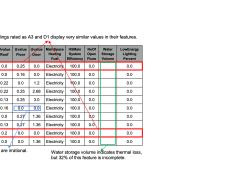Authors: Minki Jeong, Wanyeong Jung
Published on: July 16, 2022
Impact Score: 8.15
Arxiv code: Arxiv:2207.07862
Summary
- What is new: MAC-DO, a novel DRAM-based in-situ accelerator that supports multi-bit MAC operations within a single cycle using a new analog computation method.
- Why this is important: Existing DRAM-based in-situ accelerators face low array utilization and inefficiency in performing complex operations like multi-bit MAC, leading to poor power efficiency and high data movement.
- What the research proposes: The paper introduces a MAC-DO cell composed of two 1T1C DRAM cells, which enables efficient, concurrent multi-bit MAC operations within a single cycle, significantly improving throughput and energy efficiency.
- Results: A MAC-DO array can accelerate matrix multiplications efficiently, supporting computations in deep neural networks with minimal data movement and high throughput.
Technical Details
Technological frameworks used: nan
Models used: MAC-DO uses charge steering for analog computation and achieves compatibility with existing 1T1C DRAM cells.
Data used: nan
Potential Impact
This technology could disrupt markets relying on deep learning and artificial intelligence, benefiting semiconductor companies and various tech industries implementing DNNs.
Want to implement this idea in a business?
We have generated a startup concept here: ChipsAI.


Leave a Reply